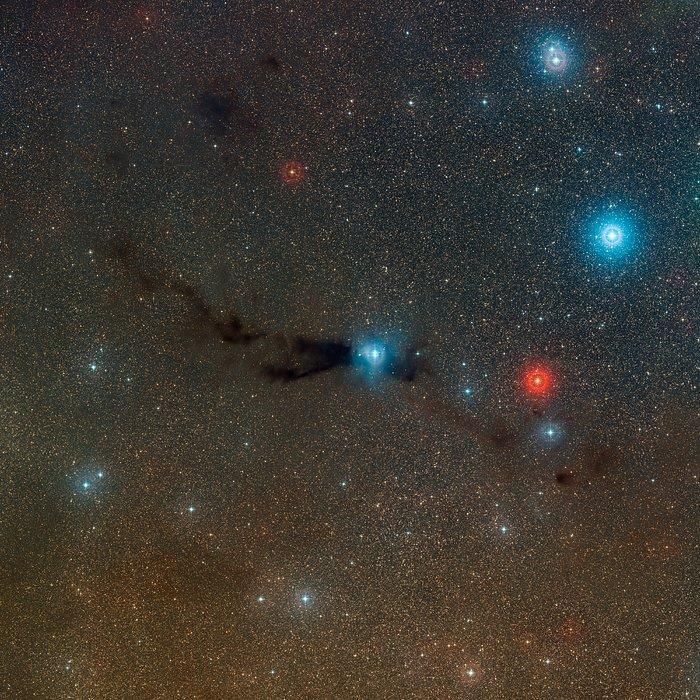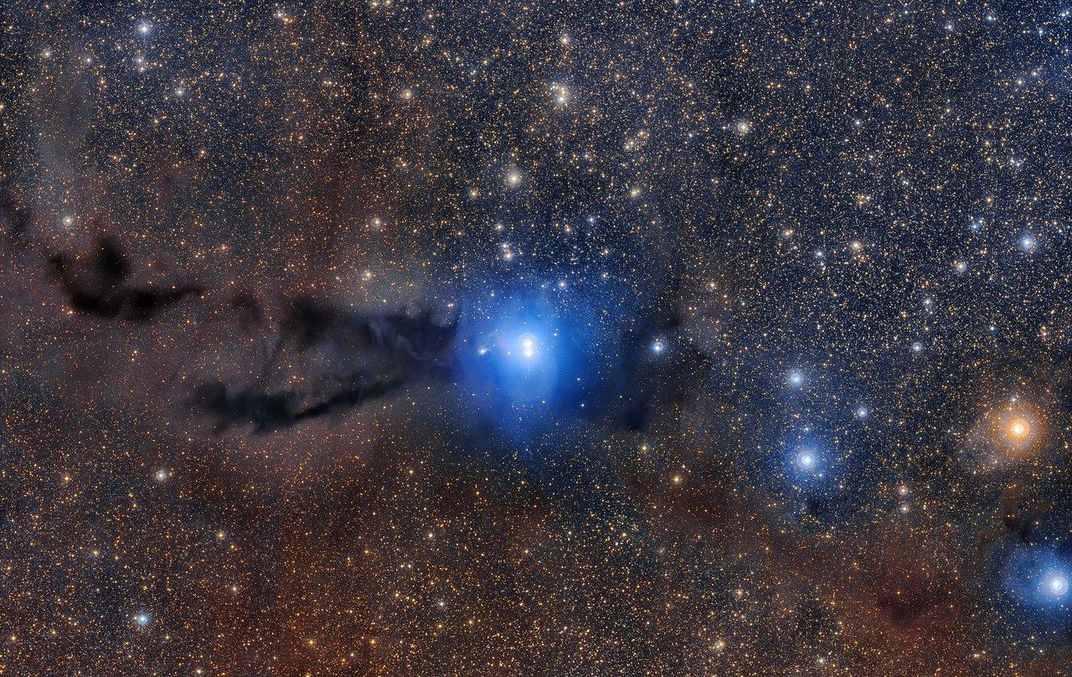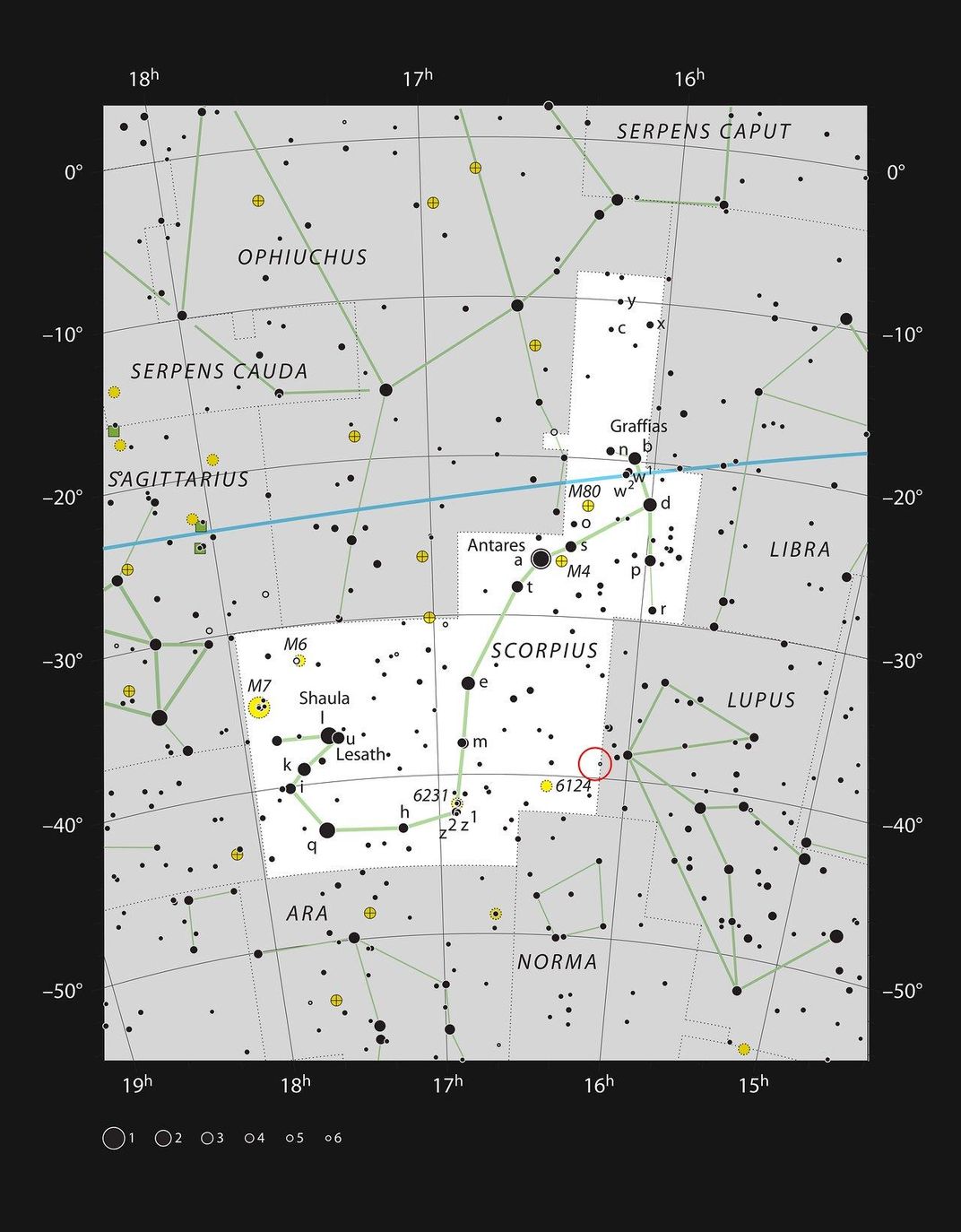Dark Nebula Hides a Brilliant Streak of Baby Stars
South American observatory captures most detailed peek yet at Lupus Clouds stellar nursery
/https://tf-cmsv2-smithsonianmag-media.s3.amazonaws.com/filer/a2/fb/a2fb4bce-fb5f-4dc0-9363-c5d13a64999e/eso1804a.jpg)
Just 600 light years from Earth, a dark gash blacks out the stars. But the darkness isn’t a void, it's an opaque cloud of cold dust and gas that absorbs light. Now, astronomers have captured this region, known as Lupus 3, in the most detailed images yet.
Lupus 3 is what's known as a dark nebula. Though most people envision nebulas as bright, billowing clouds in the sky, dark nebulas are regions with tons of dust, which absorbs and scatters light, making them appear as black smudges atop a sparkling backdrop. Despite the dark coloring, these regions are actually vibrant stellar nurseries where collapsing clouds of gas and dust spark the birth of new stars. As the stars grow, they get hotter and brighter until their radiation and strong winds clear their surroundings of gas and dust, shining bright like the two young stars in the center of the image.
The new images come from observations made by the Very Large Telescope (VLT) and MPG/ESO 2.2-metre telescope run by the European Southern Observatory in the Atacama Desert of Chile. VLT is an array of interconnected telescopes at the Paranal observatory site, which is located over 8,500 feet high in one of the driest locations in the world—an ideal spot for ground-based telescopes. The MPG/ESO 2.2-metre telescope is part of the La Silla Observatory, perched at over 7,800 feet on a mountainside near Santiago.
Astronomers study these clouds of gas and dust to learn more about the birth of stars, perhaps even learning more about how our own sun once formed. Lupus 3 is one of the closest stellar nurseries, which has made it a popular observing target. It's one of four Lupus Clouds, dark nebula star forming regions that take their name from the nearby Lupus (The Wolf) constellation.
Early astronomers thought these dark gashes in the sky were voids. It was only after E.E. Barnard photographed nearly 200 dark nebula in the early 1900s that astromers figured out that dark nebula are cousins to bright nebula but with much denser concentrations of gas and dust.
Lupus 3 is far from the only dark nebula up in the sky. Its more famous kin, the Coalsack Nebula, lies near the Southern Cross. Another well-known dark nebula, the Great Rift, snakes across the Milky Way. Both are large enough to be visible to the naked eye. Perhaps the easiest dark nebula to identify is the Horsehead Nebula, which takes its name from its equine-like silhouette.


